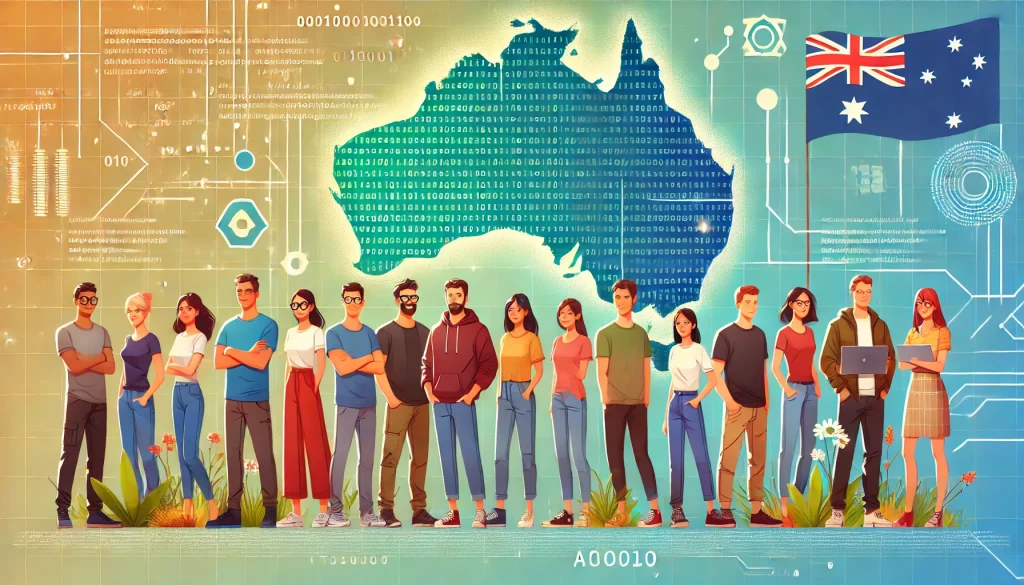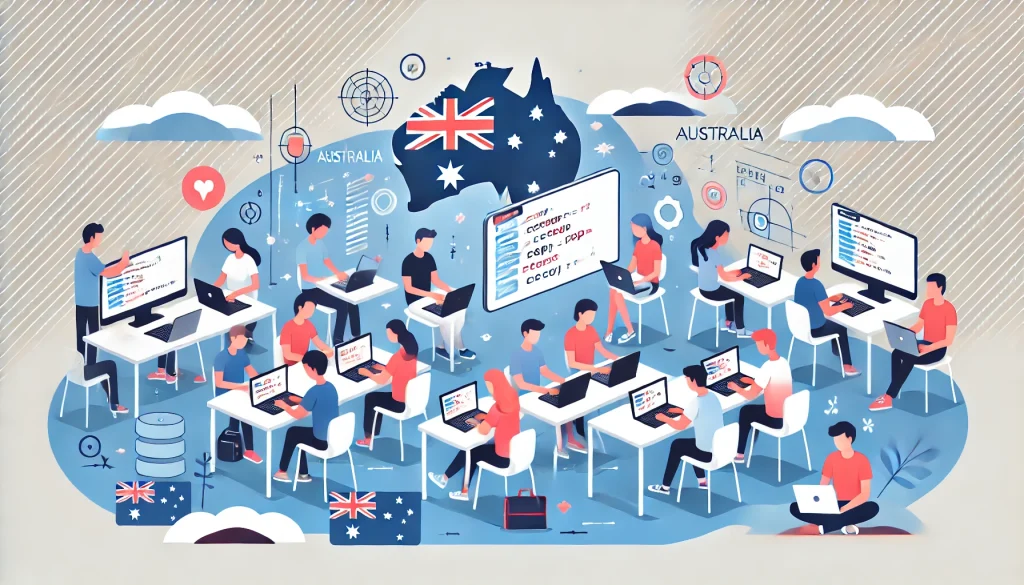Australia’s tech sector is on a mission to reach one million tech workers by 2025, up from about 860,000 in 2021. This ambitious goal, championed by industry bodies and the federal government, aims to position Australia as a leading tech hub. Despite global layoffs shaking parts of the industry, local leaders see technology employment as a growth engine for Australia’s economy.
In this article, you’ll learn:
- The key strategies behind Australia’s tech expansion.
- Programs boosting STEM education and digital skills.
- How skilled migration reforms are attracting overseas talent.
- The impact on local developers and underrepresented groups.

1. The Goal: One Million Tech Jobs by 2025
1.1 A Growing Sector, Despite Global Turbulence
While major tech hubs like Silicon Valley and parts of Europe are reeling from layoffs, Australia sees an opportunity to strengthen its workforce. Policy makers and industry groups recognize that digital transformation affects every corner of the economy—from mining and agriculture to finance and healthcare—creating strong, lasting demand for skilled professionals.
1.2 Why It Matters
- Economic Diversification: Moving beyond mining and traditional services, tech investment broadens Australia’s economic base.
- Innovation & Competitiveness: A robust tech workforce drives homegrown startups and helps established companies stay competitive.
- Regional Impact: Digital jobs can boost regional areas, not just metropolitan hubs, if infrastructure and training programs are expanded nationwide.
2. Education & Skills: Building the Talent Pipeline
2.1 STEM Education Initiatives
National and state governments are rolling out STEM-focused curricula at earlier grade levels, including coding and robotics in primary schools. Programs like the Digital Technologies Hub or CS in Schools equip teachers with resources to engage students in computing concepts. This early exposure fosters enthusiasm for tech careers and addresses future skill shortages.
2.2 Digital Skills Training for Adults
Beyond formal schooling, there’s a surge in adult retraining programs:
- Tertiary Short Courses: Universities offer micro-credentials in data analytics, cloud computing, or cybersecurity—fast-tracking professionals into high-demand fields.
- Bootcamps & Upskilling: Private providers (e.g., Coder Academy, General Assembly) deliver short, intensive bootcamps focusing on web development, AI, or DevOps.
These training options help career changers or underemployed individuals pivot into tech, enriching Australia’s talent pool.
3. Skilled Migration Reforms
3.1 Easing Visa Pathways
As local universities and training programs ramp up, Australia still needs experienced foreign talent to meet the ambitious one-million goal. The government has updated skilled migration categories—like the Global Talent Visa—to attract top-tier software engineers, AI researchers, and startup founders. Lower barriers and faster processing times are crucial to stay competitive in a global race for tech minds.
3.2 Attracting Overseas Entrepreneurs
New initiatives encourage overseas entrepreneurs to launch startups in Australia, often accompanied by incentives like tax breaks or streamlined visas. This fosters a vibrant startup ecosystem and creates tech jobs. The government sees foreign founders as catalysts who bring new ideas, partnerships, and capital.

4. Inclusion & Retention Strategies
4.1 Diversifying Tech
Industry groups emphasize reaching underrepresented groups—women, Indigenous Australians, rural communities—to broaden the tech pipeline. Scholarships, mentorships, and specialized training (e.g., She Codes, Deadly Science) aim to remove barriers and foster a more inclusive workforce.
Why It’s Important: Studies repeatedly show diverse teams outperform homogenous ones, spurring innovation and creativity, while also addressing labor shortages.
4.2 Employee Share Schemes
To keep skilled staff in a competitive market, the Australian government updated employee share scheme regulations, making it easier for startups to offer equity. This policy not only encourages staff loyalty but also aligns employees’ incentives with a company’s long-term success. It’s a boon for local startups fighting to retain talent against global tech giants.

5. Implications for Developers
5.1 Abundant Job Opportunities
For developers, this expansion signals ongoing job security and market demand—across corporate, government, and startup sectors. Even amid global layoffs, Australia’s market remains comparatively stable. Experienced engineers can command competitive salaries, while new graduates and career-switchers find many entry points.
5.2 Community & Collaboration
A bigger tech workforce enhances local communities, user groups, and hackathons, making it easier to network, share knowledge, and find mentorship. Cities like Sydney, Melbourne, Brisbane, and Perth host growing numbers of meetups, plus government-sponsored accelerators that connect founders with talent.
5.3 Embrace Lifelong Learning
With new roles emerging in data science, AI, cybersecurity, and DevOps, continuous learning is essential. Staying current with cloud platforms, machine learning frameworks, or new languages (e.g., Rust) helps developers remain competitive—especially as the talent pool grows.
6. Challenges & Criticisms
No initiative is without hurdles:
- Regional Disparities: Most tech opportunities cluster in urban centers, leaving some rural areas behind.
- Quality vs. Quantity: Building 1 million tech jobs can risk quantity over quality if training programs or credentials are rushed.
- Global Competition: Skilled immigrants might find bigger paychecks or more advanced ecosystems in the US or Europe, so Australia must stay attractive.
- Sustainability: The expansion must consider the environment—data centers and extended commutes can strain resources if not managed responsibly.
Despite these challenges, industry experts remain optimistic that a balanced approach—blending local skill development, migration, diversity, and investment—can fuel Australia’s tech economy for years to come.
Conclusion
Australia’s ambitious plan to reach one million tech jobs by 2025 isn’t just a headline; it’s a roadmap for reshaping the nation’s economy. By expanding STEM education, reforming migration pathways, encouraging underrepresented groups, and aligning incentives for startups, the country hopes to cultivate a robust, future-ready workforce. For developers, this means greater job security, diverse opportunities, and thriving communities to learn and grow with.
Key Takeaways:
- The government and private sector are investing heavily in STEM education and digital upskilling.
- Skilled migration reforms entice experienced overseas developers to fill immediate demand.
- Diversity programs aim to include more women, Indigenous Australians, and rural communities.
- Developer prospects remain strong, but continuous learning is crucial in an expanding market.
As Australia forges ahead, building a broad and skilled tech workforce, the impact will reverberate well beyond 2025—strengthening innovation, entrepreneurship, and the nation’s global competitiveness.










